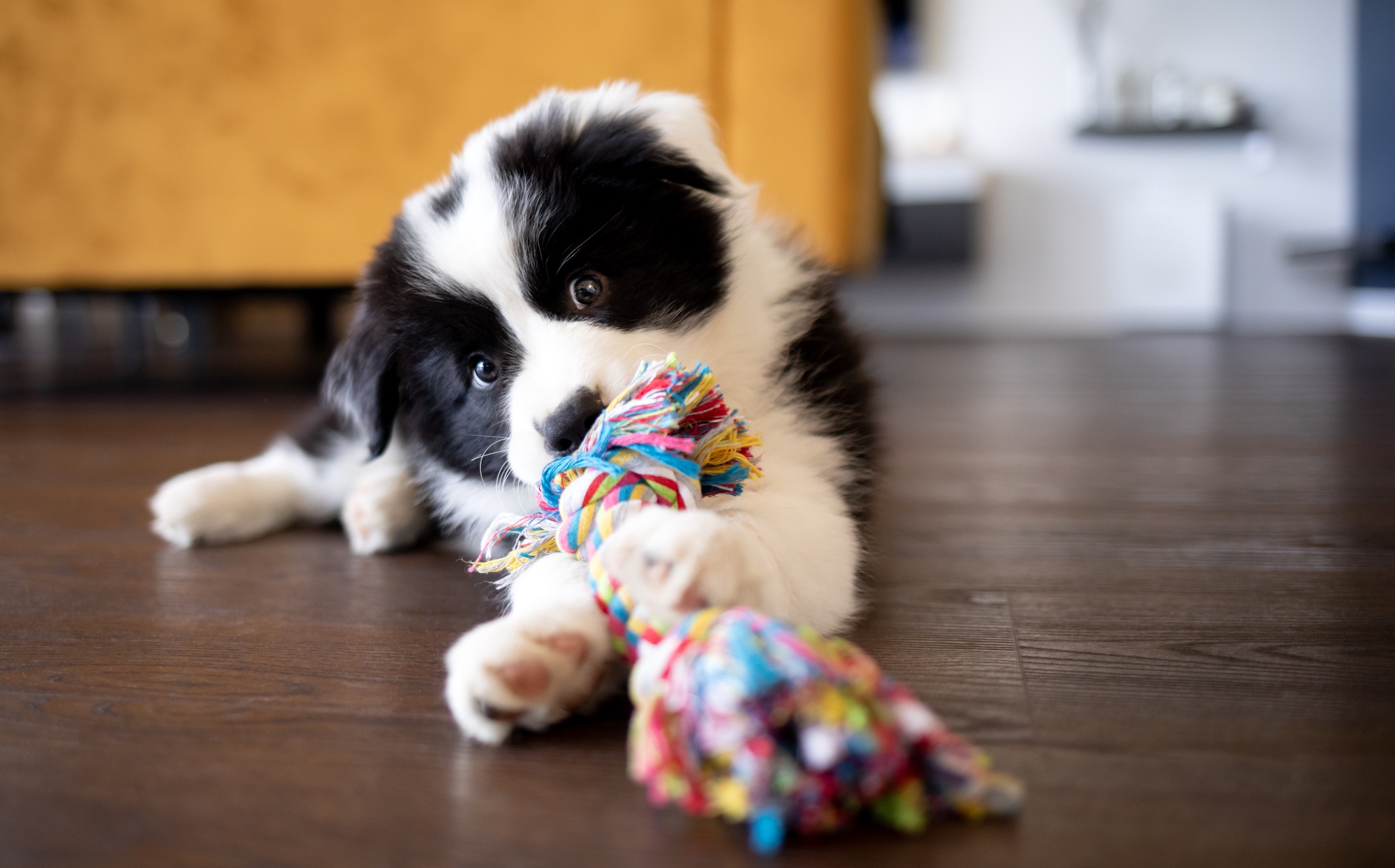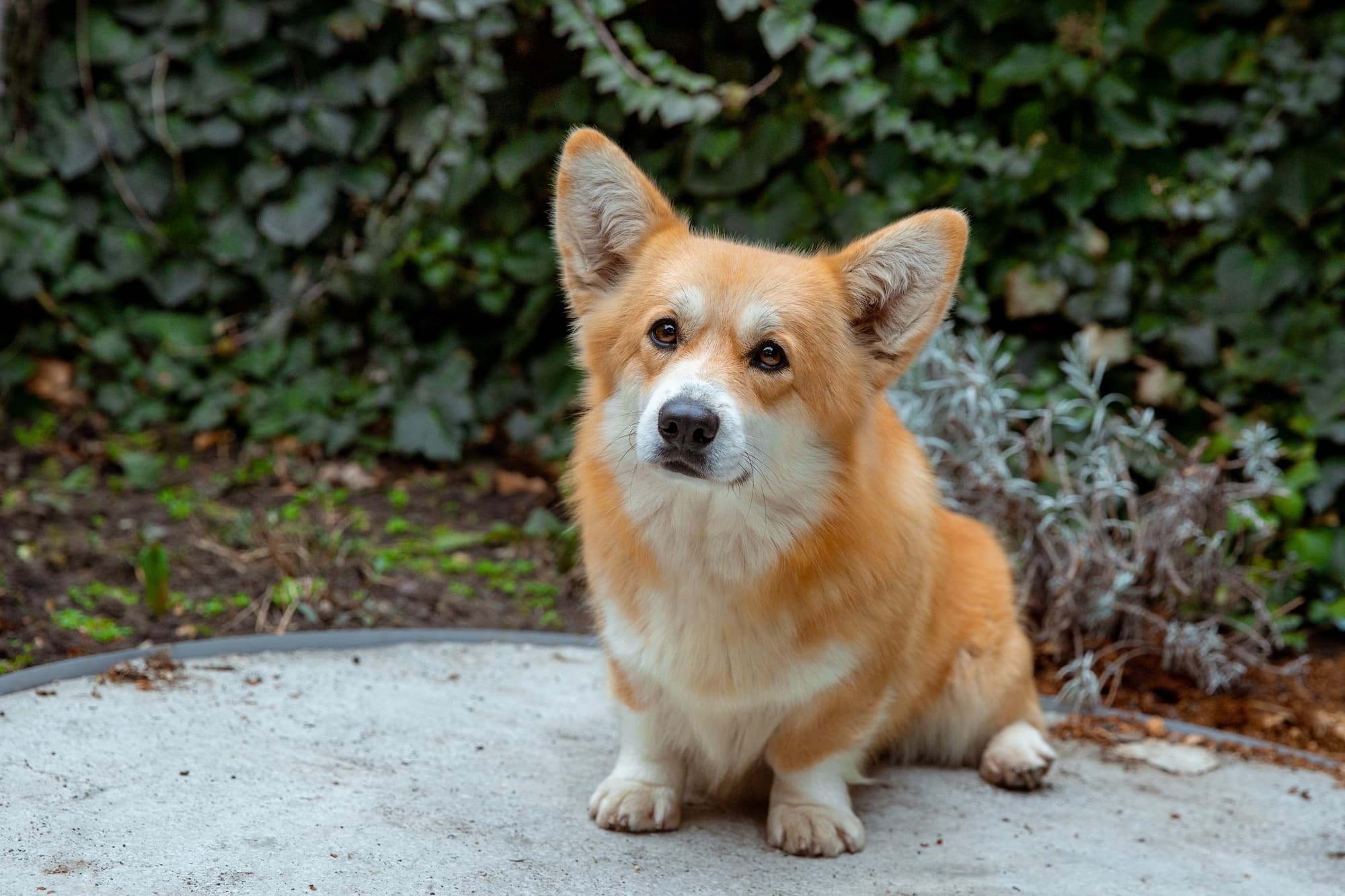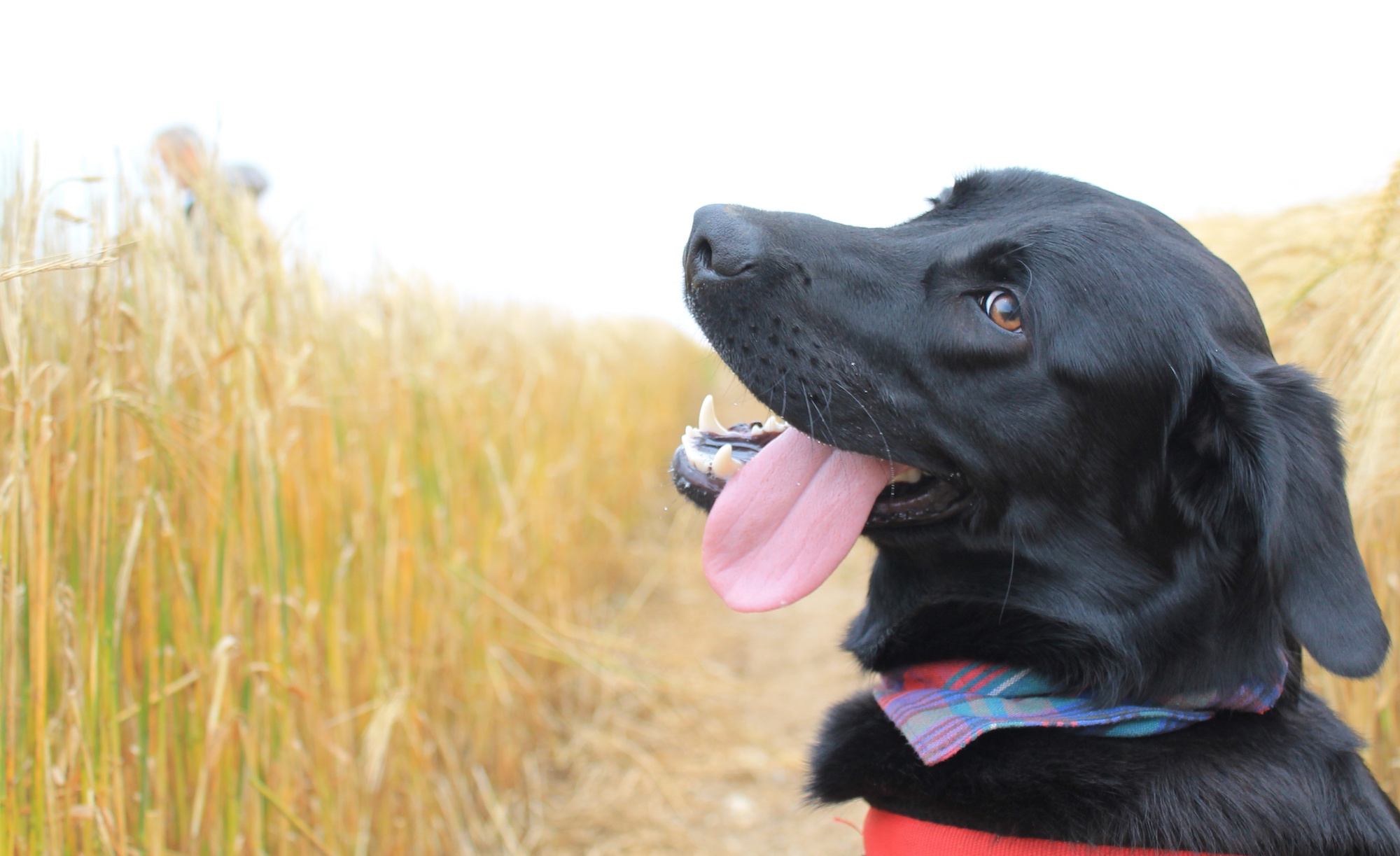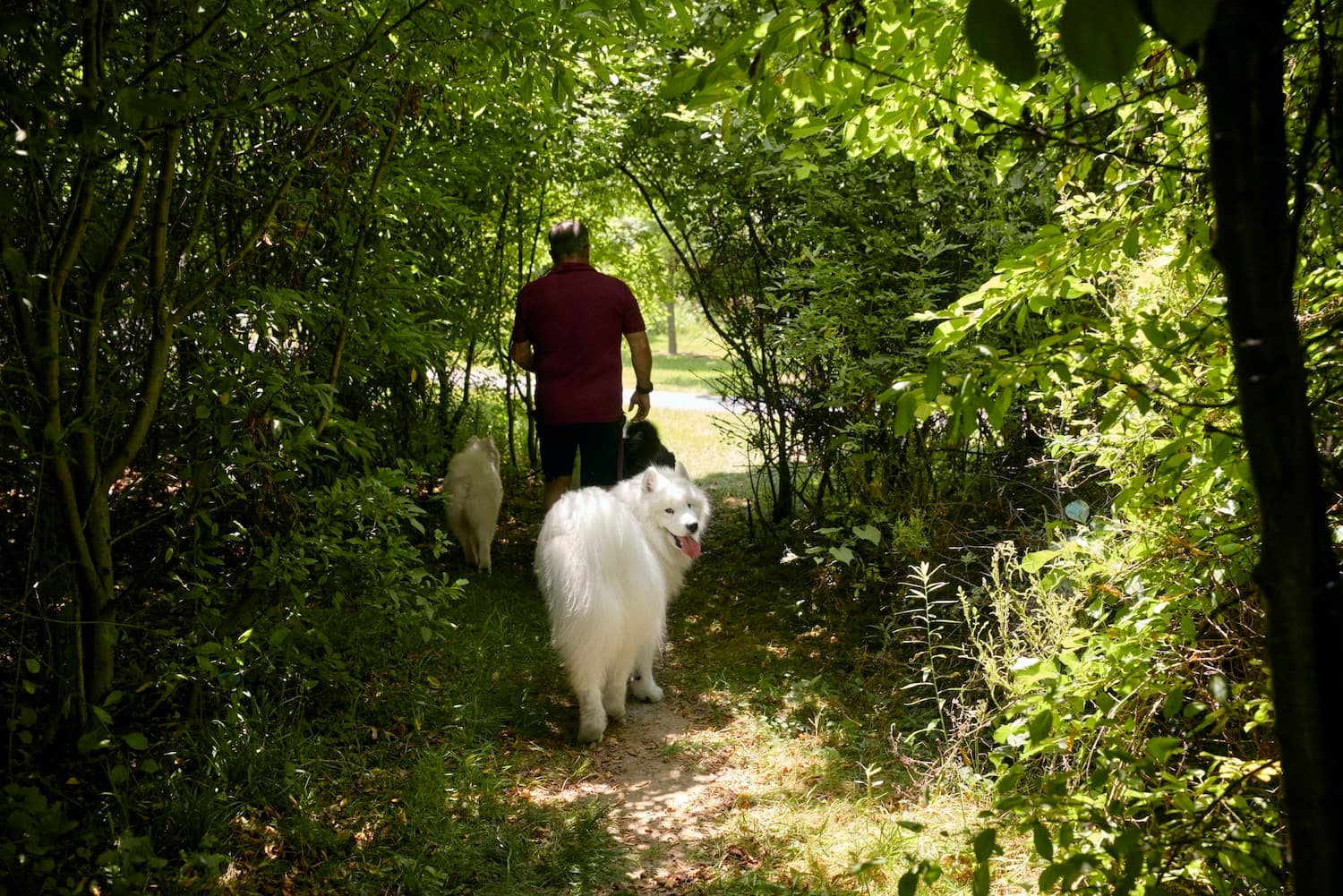It’s every dog owner’s worst nightmare: Your pet is in distress, and you don’t know what to do. It’s a given that most dogs like to chew, and no matter how careful and watchful we are, there’s a risk they can accidentally swallow something that gets stuck in their throat. Here’s a guide on what to do in a choking situation.
What is choking?
Choking is when an object becomes stuck in the throat or windpipe, and the flow of air is cut off. Just as with humans, choking is very dangerous for dogs.
“Dogs have a similar airway structure to humans, with the opening to the windpipe being susceptible to objects or food getting stuck,” says Dr. Gabrielle Fadl, director of primary care at Bond Vet. “Fortunately, it’s uncommon—but when it does happen, it can be very serious and even fatal in a matter of minutes if the airway is completely obstructed.”
Choking hazards
Common items can be choking hazards, such as toys, treats, and food. Items that aren’t meant for your dog, but which they have access to–like kids’ toys–also can be dangerous.
“The most common objects we see dogs choking on are toys, like balls, or large bits of hard food like a part of a hard dog treat, a bite of steak, or even kibble,” says Dr. Sarah Hoggan, medical director of emergency and critical care for VCA California Veterinary Specialists in Murrieta. “When a dog is choking on a toy, it’s typically because the toy is too small for the dog, like a German Shepherd being given a golf ball to play with.”
Even size-appropriate toys can pose a risk, however. “Check your pet’s toys regularly for damage or any pieces that could be chewed off and choked on,” Dr. Fadl says. She recommends being careful to remove chewed-up pieces of rawhide or other large treats if your dog has a habit of trying to swallow them whole. A rubber ball on a rope is also a good option, she notes.
How to tell if your dog is choking
If your dog’s airway is completely blocked, they won’t be able to breathe or cough, and will likely look panicked or very distressed. “Oxygen is vital for life, so a true airway blockage can lead to death in a matter of minutes,” Dr. Fadl says. “A dog might take on a bluish color of the skin or gums as the lack of oxygen becomes critical.”
A partial blockage, where some air can get through, is not as critical, but still requires immediate care. If your dog has a partial blockage, they might cough, or whine, or look distressed. “A dog’s panic can increase their need for oxygen, which leads to a vicious cycle since they’re not able to get as much air in—so they can still suffer a life-threatening oxygen shortage,” Dr. Fadl notes. “So, it’s still very much a medical emergency. Keep in mind that depending on the size and shape of the object, a partial blockage might become a full blockage if the object shifts.”
Other signs of choking can include pawing at their mouth, rubbing their face on furniture or the ground, salivating, or gagging.
Some other sounds dogs make may seem like choking, but probably aren’t. If your dog is calm and walking around as normal but has a persistent dry, hacking cough, that’s more likely to be kennel cough than choking, Dr. Hoggan notes.
Then there’s reverse sneezing, which may happen if your dog has nasal congestion or an irritation at the back of their throat. “Reverse sneezing sounds alarming because it has a very unusual turbulent sucking sound, as if the dog is gasping for air, and the dog will suddenly stop and stand still while it is having the reverse sneezing episode,” Dr. Hoggan warns. “Fortunately, while it does sound and look alarming, it is harmless normal behavior dogs use to clear the back of their throat.”
Some dogs also make a hacking sound after drinking water; if they seem calm and the sound stops, they aren’t choking. As with humans, if dogs drink too fast or move their head while drinking, they can have that sensation of the liquid going “down the wrong pipe,” which can cause some coughing or hacking, but isn’t dangerous.
What to do if your dog is choking
If your dog is choking, whether it’s a total or partial blockage, Dr. Fadl recommends getting them to a nearby emergency vet right away, if possible. “Try to call and let them know you’re on your way so they can prepare and set up equipment to help your pet immediately,” she says. “Depending on your dog’s status and the type of object they’re choking on, a veterinarian may try one or more techniques including the Heimlich maneuver, retrieving the object with forceps, or a special external extraction technique. Conscious dogs might need to be anesthetized to allow access to the throat and relax the muscles, and in challenging cases, surgical removal might be needed.”
Even if there’s an emergency vet close to home, Dr. Fadl recommends that pet owners get familiar with first aid for dogs, just in case.
“It’s generally advised to avoid sticking your fingers in your dog’s mouth to remove the object if at all possible, as serious hand and finger injuries may occur,” she says.
Along with the danger involved, it’s also difficult to see into and reach the back of a dog’s throat, especially if you have a breed with a longer snout, like a shepherd or collie, Dr. Hoggan says.
Instead, both vets recommend performing the Heimlich maneuver on your dog. You also can learn the external extraction technique; if your dog is unconscious, you would place them on their back and use your fingers in a J stroke motion on their throat to push the stuck item out.
If there’s another person with you and your dog, one of you can drive to the emergency vet while the other tries to assist the dog, to better their chances, Dr. Fadl adds.
After a choking incident
Even if you’ve removed the item and your dog is out of immediate danger, be sure to bring them to the vet after a choking incident.
“Your vet can check for signs of damage, irritation, or pain of the airway or any other complications that need treatment,” Dr. Fadl says. “Some dogs may benefit from oxygen supplementation.”
There is also a risk of developing fluid on their lungs after a choking incident, Dr. Hoggan says. “During a choking episode, dogs will work so hard to breathe that they cause small tearing injuries to their lungs,” she notes. “These tears will leak fluid, just like a scrape to our skin becomes moist. The lungs act the same way as the scrape, but this small amount of fluid will flood the alveoli in the lungs and sabotage their ability to absorb oxygen. This fluid usually takes several minutes to develop, but it can become life threatening, so having them evaluated by a veterinarian is the safest option.”
How to keep your dog safe
Along with monitoring your surroundings for potential choking hazards, there are other steps you can take to keep your dog safe.
If your dog tends to eat very quickly, try a slow feeder. Purchase toys and bones designed for heavy chewers if your dog tends to tear things up, and promptly remove any pieces your dog chews off. Take a course on how to give pet first aid (in person or online), and download the Red Cross Pet First Aid app.
Plus, if you haven’t already, find out what emergency vet clinics are close to you, put their phone numbers in your contacts and add to any emergency contact lists you have in your home.





